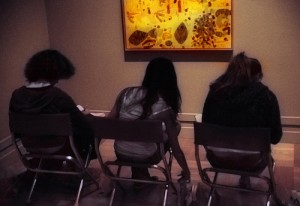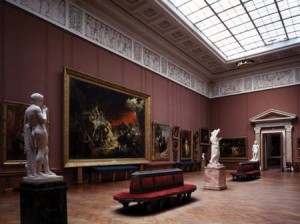by David Heyman
Everybody who is involved in the creative process of producing art is interested in refining their skills and learning new techniques. While many art instruction books and videos are available, covering all the artistic mediums, there is no substitute for direct observation and study of the great masters of your particular genre. A wonderful, and often underutilized resource for doing this is to visit a museum.
Museums are viewed by many as stuffy buildings to run through on a rainy weekend, or as places to take a first date to impress them with your “culture”. Nothing could be further from the truth. With the right mindset, and a few tips to keep in mind, your local museum can be a comprehensive art education, and also invaluable for help with any creative business.
The most important piece of advice for really getting the most out of a museum is to take a slow pace: stop and study the pieces, instead of maintaining a slow walk and glancing at everything. It helps if you are at an off-peak time for your visit, as the lack of crowds invite silence and time for learning.
Particularly if you are touring a larger museum, pick out a few areas of interest, for example Roman sculpture or paintings from the Hudson River School, and really take the time to analyze what you are seeing. The main value of seeing original works, versus reading about them in art books, is that you can look up close and see the texture, brush strokes, transparency, etc. of these masterpieces. This will allow you to learn how the artist actually created these effects.
Read the information placards! You would be surprised at how much helpful information is offered to you on these cards. Would you watch your favorite TV show with the sound turned off? Of course not. Then why would you go to study great works of art without looking at the background and history that the curators provided to help understand the piece of artwork and put it into context? With this information, you will get a wealth of artistic guidance and ideas.
 Some museums will even allow you to bring in a sketchbook, or easel, and set up to do a study directly from an original artwork. All museums are different in their rules, so be sure to check with the particular museum that you are visiting before taking in your supplies. Many of the great artists of history actually learned this way themselves too, from direct study of their predecessors.
Some museums will even allow you to bring in a sketchbook, or easel, and set up to do a study directly from an original artwork. All museums are different in their rules, so be sure to check with the particular museum that you are visiting before taking in your supplies. Many of the great artists of history actually learned this way themselves too, from direct study of their predecessors.
Finally, wear comfortable walking shoes and take breaks. Museums are one of the best options around for creative knowledge and study, but they can be very tiring!

